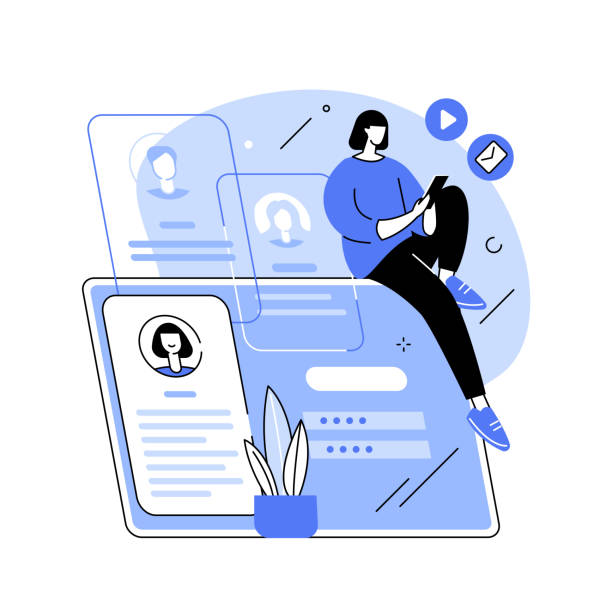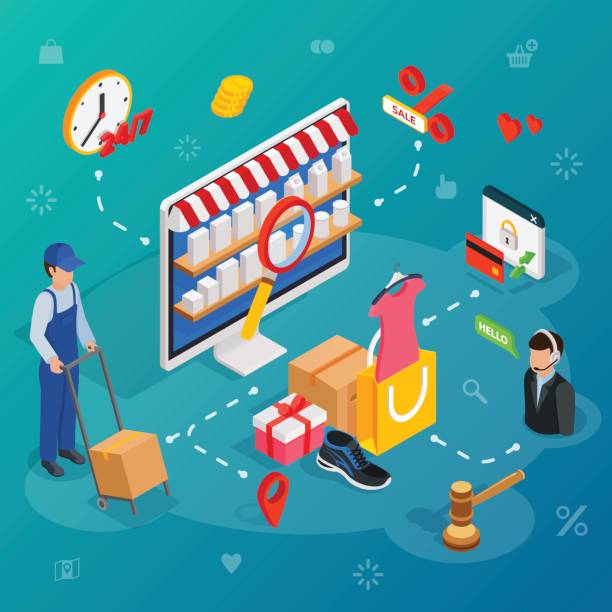As an e-commerce business owner or marketer, it’s becoming increasingly important to keep customers engaged in addition to the other tasks a business has to do.
From your storefront to social media and all the other digital touchpoints you’ve set up, it’s getting harder by the day to keep up with conversations at different stages of the customer journey.
The problem is that you can only do with conversations in a competitive market. They are the only means to excite a consumer and also get them involved with your brand in one way or another.
Fortunately, there is an intelligent solution to do all this at scale – eCommerce chatbots.
Chatbots have become one of the most popular eCommerce trends for businesses. But some brands still need to be convinced about using conversational commerce technology.
If you’re looking for answers on what chatbots are, what benefits they offer, and how to use them, you’ve come to the right place. This blog will teach you everything you need to know about chatbots in eCommerce!
What are chatbots in eCommerce?
A chatbot is a computer program that automatically initiates customer interaction or conversation. These conversations occur based on predefined conditions, triggers, and events around an online customer’s buying process.
➢ Let’s explain this with a simple example
You visit Nykaa to explore the beauty and cosmetics range. However, you need help figuring out where to start, so you contact the company via the chat bubble on the website.
Once you click on the bubble, you’ll be asked a question about your concern and presented with several options.
The chatbot determines the following steps based on the answer you enter. In this case, it asks you for more details about your skin problem so that it can bring in an expert from its team to advise you.
That is the most straightforward instance of what an eCommerce chatbot looks like.
While our example was about a chatbot implemented on a website, such interactions with brands are now possible on social media platforms and even messaging apps.
Now let’s talk a bit about why such prominent brands as Nykaa, which can have a team of agents to answer customer queries, are using chatbots.
Related: 11 Ways eCommerce Chatbots Can Increase Sales, Support, and Lead Generation
Why are chatbots important for e-commerce?
1. Your clients want to talk to you
A study on consumer expectations found that people want to talk to brands before they buy from them. That is especially true in today’s world, where most of our purchases are made online, and there needs to be more opportunity to touch a product before buying.
If you are unavailable at a specific time of the day, it can be taken to mean that you don’t want to talk to customers; you want to sell them something.
A chatbot assists you talk to clients at a time and place of their choosing, helping them make a purchase or easing their fears and showing them that your brand takes them seriously.
2. Your customers want immediate answers
As a consumer, how often have you waited for a brand to respond to an inquiry within 24 to 48 hours?
Chances are, you’re looking for another business where you can get more information about what you’re looking for. Or for someone who can help you shop.
According to various surveys, 82-90% of consumers expect brand companies to provide immediate answers to marketing, sales, and customer service questions. Imagine responding “instantly” to a hundred inquiries on your website and through your social media channels – you can do it. That is where eCommerce chatbots come in.
The technology can handle most of your customer service requests using the data already on your website. This way, the conversation stays engaged, the customer stays connected to your brand, and is, therefore, more likely to buy the product.
3. You can’t be available 24/7
Another reason brands could be faster in responding to consumers is their unavailability. You could be servicing a new item launch, outsourcing materials, or trying to find partners to advertise your brand – there’s always plenty to do that can keep you from chatting.
While you could have a team of live agents answering customer questions daily, they also have a schedule. On the other hand, your customers and their buying behavior need a schedule!
Think about how many times you’ve shopped at midnight.
A chatbot helps you be available 24/7 to answer questions at any given time. If a chatbot can’t help the customer, it can continue the conversation by asking more questions and collecting data you can follow up on the next day.
4. Your customers are everywhere
Because of the pandemic, consumers have been making daily purchases online. But “online” alone is a long shot.
Now that we’re back to normal, offline channels are coming back into the mix of the customer journey. Simply put, your customers are everywhere. They can contact you through your online store, Facebook, Instagram, or even WhatsApp to get an answer to a question.
According to G2, multichannel selling is the only way for e-commerce businesses to keep up with customers and meet their needs on the platform of their choice.
Imagine having to keep up with client conversations on all of these channels – that’s why businesses are adopting eCommerce chatbots.
5. The cost of your live agent can quickly spiral out of control
In the past, companies hired live agents to handle customer inquiries in various departments. But think about how many employees you need to keep track of all customer conversations across platforms.
The relevance of “human” conversations remains, but the need for immediate answers is where live agents become challenging to deal with the modern-day consumer. Employing more live agents is no longer an option if you’re looking to optimize costs to streamline budgets and focus on marketing and advertising.
➢ That’s where chatbots come in
Comparisons have shown that chatbots are easy to scale and can handle more than thousands of requests per day at a much lower cost than hiring as many live agents. A study by IBM found savings of 30% for companies using chatbots.
What are the different types of chatbots?
To provide the above benefits, chatbot technology is constantly evolving. While much work is still being done on the automation front using artificial innovation and artificial intelligence, chatbots can be broadly categorized into three types.
While we won’t go into the technical aspects of each type, here’s a brief overview of the three:
1. Simple chatbots
Simple chatbots are the simplest form of chatbots and have limited features. They are likewise called “rule-based bots” and are very task-specific, making them suitable for simple dialogs.
The chatbot is set up to ask questions based on predetermined options. The consumer can then pick from the choices till they obtain a response to their inquiry.
In this situation, the chatbot does not draw context or inferences from previous conversations or interactions. Each answer is based on the consumer’s input and is taken at face value.
An example: is a pizza order. To order a pizza, this chatbot walks you through a series of questions about the size, crust, and toppings you want to add. It guides you through ordering a pizza until you provide a delivery address and make payment.
Chatbots used for order status are another example. A simple chatbot asks you for the order number and, depending on the option, provides you with an order condition update or a tracking URL.
2. Intelligent chatbots
Intelligent chatbots are one step ahead of the logical chatbots mentioned above. They are developed with technologies like AI to better understand human interactions and intentions before responding to them. They can mimic human-like, free-flowing conversations by learning from previous interactions and predefined parameters while building the bot.
➢ Shopping assistants in online stores are one example
A consumer can seamlessly converse with these chatbots and determine the nature of the interaction. If they are looking for skin-whitening products, they can send a message to the chatbot. The chatbot can read, process, and understand the message and will respond with product recommendations from the store that match the concern.
If you’ve used Siri, intelligent chatbots are pretty similar to this! No matter how you ask a question, the chatbot can give you a suitable answer.
3. Hybrid chatbots
A hybrid chatbot is usually a combination of simple and intelligent chatbots designed to simplify complex use cases. They are geared up with some rule-based jobs yet can additionally recognize the intent and context behind a message to offer a human-like reaction.
➢ Let’s return to the pizza example
A hybrid chatbot would ask the same questions about size, crust, and toppings. In addition, it can also ask questions like, “How would you love your pizza (sweet, bland, spicy, very spicy)?
The two commonalities of these chatbots are that they can be customized to the use case at hand and seamlessly transition into a conversation when you need to intervene to answer a customer query.
Are chatbots successful in eCommerce?
If statistics are to be considered, the answer is yes, and they are already being used in various industries.
According to Gartner, 85% of customer interactions will occur without interaction with another human; we will increasingly use self-service options and chatbots.
The worldwide chatbot market is anticipated to be worth $9.4 billion by 2024; growth is being led by consumer demand for self-service and 24/7 customer support.
According to a Facebook survey, more than 50% of customers say they are more likely to shop with a business they can connect with via chat.
About 74% of consumers use chatbots to research or purchase a company’s products and services.
Fifty-seven percent of businesses have found that chatbots provide an everyday experience for shoppers, resulting in higher ROI with minimal effort. But here are the exciting numbers that will convince you that it’s time to deploy eCommerce chatbots:
Greater than 59% of Millennials and 60% of Gen Xers have already interacted with chatbots. Nearly 50% of shoppers are willing to buy products/services through a bot conversation.
Now that you know your customers value getting the correct answer more than just getting it from “you,” let’s look at how you can utilize chatbots in eCommerce.
Related: How to increase e-commerce sales with chatbots
How can you utilize chatbots in eCommerce?
There are several ways eCommerce businesses use chatbots. Here are some of the most compelling use cases:
1. Collecting client details
Chatbots are an excellent way to record site visitor intent and use the information to personalize your advertising and marketing projects.
For example, when somebody comes down to your site, you can use a welcome robot to start a discussion with them. As you talk to the visitor, you can capture information about the products they’re looking for, how they want to be notified about products and offers, and so on.
2. Offer shopping assistance/customer support
Despite how complete your item summary and media gallery are, an online buyer is bound to have inquiries before buying.
You can use a chatbot to answer questions about sizing, available product variants, ongoing discounts they can redeem, or even provide product recommendations based on their searches.
3. Upsell and cross-sell to shoppers
You go into a store to buy a pair of jeans but often leave with a matching shirt. That is because the salesperson has managed to sell you a good pair of jeans and cross-sell you from another product category.
A chatbot can assist you in doing this online. Based on what a consumer is seeking or what web page they are on, a chatbot can begin a discussion that helps them find other alternatives that may be better than the customer’s mind.
Similarly, based on the shopper’s intent, the chatbot can also recommend products that match what they were looking for. Think of it like product recommendations, but in an informal setting, like talking to the salesperson you met.
4. Preventing and recovering from abandoned carts
There can be multiple reasons why an online shopper abandons a purchase. With chatbots, you can prevent them from abandoning the cart or bring them back if they have already abandoned it.
For example, if you see a site visitor abandoning the cart and leaving your site or taking too long to move to the next step, you can utilize a chatbot to trigger a conversation and ask if the visitor needs aid. Whether calculating delivery costs, using a discount on the cart overall, or simply sharing return and exchange policies to put the site visitor comfortable, a chatbot can do anything to stop cart abandonment.
When a visitor has deserted the cart, they can use a chatbot on social media to advise them of the items they left. Can use the discussion to either bring the visitor back to the shop to complete the acquisition or to comprehend why they deserted the cart in the first place.
5. Keep your customers engaged
If you’ve been sending email newsletters to keep your customers engaged, it’s time to employ another strategy.
Chatbots are great for keeping customers engaged. Two-way conversation, as opposed to the one-way distribution of details and updates, is a lot more effective and gives you many more possibilities to learn more about the client better or market them something.
For example, when a customer has bought in your shop, you can utilize chatbots to send them product guidelines or introduce them to various other items that match their passions. You can use the customer’s responses to follow up with them and get them to revisit your store!
6. Collect customer feedback and reviews
Chatbots are also highly effective at collecting customer feedback. Think of traditional emails asking for product feedback.
Visualize walking right into a store and being asked about your purchasing experience before leaving.
In the second case, you are likelier to share your feedback because it is a conversation, and we humans like to talk.
Chatbots allow you to proactively solicit customer feedback or request product reviews and ratings through various channels. In addition, chatbots can assess negative comments before it goes online, so you can deal with a client issue before it’s posted!
7. Provide easy order tracking and updating
Another excellent use case for a chatbot is order tracking.
While most e-commerce companies have automatic order status notifications set up, many consumers prefer to take matters into their own hands. Instead of enhancing the number of messages and calls you receive for order tracking, you can handle the requests with a chatbot.
A chatbot can pull information from your logistics provider and the backend of your store to inform the customer of the order status. It can also provide the customer with a tracking URL that they can use themselves to track the order or change the shipping address or delivery date to a time that suits them best.
Simply put, an e-commerce chatbot simplifies a client’s buying journey with a brand by bringing the conversation back to the digital world. And the good thing is that can use eCommerce chatbots at all the popular digital touchpoints consumers use today.
Where can you utilize eCommerce chatbots?
The great thing about eCommerce chatbots is that they can be implemented on multiple platforms, allowing businesses to be more proactive with their features and use cases.
Some of the most popular channels where eCommerce chatbots are used are:
1. Live chat (in your store)
Since 46% of customers prefer live chat over contacting them via email or phone, a chatbot is the first thing you should consider implementing in your online store. That will help you welcome new visitors, guide them on their path to purchase, provide assistance before, during, and after the purchase, and prevent shopping cart abandonment!
Chatbots have also been proven to improve customer experience and reduce bounce rates by keeping visitors engaged.
2. Facebook
According to a study by Facebook, many consumers interact with brands on social platforms to get more information about products, offers, and discounts. For this reason, implementing a chatbot on Facebook Messenger is essential.
With a Facebook Messenger chatbot, you can support customers you’ve discovered through Facebook stores, groups, or your marketing campaigns. Can use the chatbot to direct them to your website or alert them to ongoing offers and discounts they would find there.
3. Instagram
Studies have shown that nearly 150 million Instagram users have monthly conversations with a business on the platform. Instagram has become one of the most critical channels for customers to uncover brand-new brands and make purchases.
Commonly, businesses respond to DMs by hand. However, as the business expands, managing DMs and overseeing conversations (some of which are repetitive) can become too much. That is where Instagram chatbots can help.
You can use them in a similar way to Facebook chatbots. You can use a crossbreed chatbot to gather consumer info, offer item information, or guide them to your internet site, relying on what they are searching for.
4. WhatsApp
WhatsApp has over 390 million individuals alone, as well as with the launch of WhatsApp Organization API, eCommerce companies can utilize this individual base for their advertising and marketing.
There are over 5 million businesses on WhatsApp, and the number continues to grow to meet the demand for conversational commerce. But imagine answering customer queries on a chat app at scale is impossible!
WhatsApp chatbots can help businesses streamline messaging app communications and increase engagement in their program campaigns. We are seeing organizations use these chatbots to provide better customer support, recover abandoned carts, gather customer feedback, and more.
5. Telegram
Telegram is another messaging app used by businesses for marketing and customer support.
Like WhatsApp, you can establish eCommerce chatbots on the messaging platform to answer customer queries and keep them engaged, leading to more store visits and conversions.
But before you jumpstart and implement chatbots on all channels, take a quick look at a few of the best practices you should follow.
Best practices for using chatbots in eCommerce
A chatbot eliminates the obstacle between you and your customers by enabling seamless and proactive conversations. However, to get among one the most out of them, you must:
- Identify your most used channels: Look into your analytics to identify your most important traffic sources; prioritize the chatbot implementation accordingly. Start with only the absolute must-haves.
- Keep your chatbot flow simple and intuitive: Make sure communicating with your brand is simple. Think about the consumer first and foremost when implementing a simple flow.
- Have your FAQs ready: Most consumers who contact businesses have recurring and common questions. Take note of these and create a comprehensive FAQ library that you can include in your chatbot flow to make information easier.
- Use the chatbot throughout the customer journey: Don’t limit the utilize case of chatbots; know more about how you can utilize conversations to improve the customer journey before, during, and after a purchase.
- Ensure handoffs: There will be moments when a chatbot cannot answer a customer inquiry; ensure there is a way to notify you and end the conversation immediately.
- Integrate with your CRM: A chatbot collects customer data during the conversation. At a time when personalization is the order of the day, make sure you systematically record all the data. That is where integration with your CRM can be beneficial!
- Monitor and optimize: Don’t establish chatbots and forget about them. Continuously learn how your customers interact with the chatbot and what you can do to improve their experience; a chatbot can help increase your revenue and sales.
Now you know why chatbots are essential, how to use them, and where not to miss another conversation. It’s time for you to establish an eCommerce chatbot!
FAQ
What is an eCommerce chatbot?
An eCommerce chatbot is an AI-powered technology used by online retailers to assist consumers at every phase of their purchasing journey as online shopping assistants.
How do I use an eCommerce chatbot?
Chatbots are a great way to engage with your audience and convert leads into customers. They’re able to understand natural language and respond appropriately to inquiries from consumers.
Looking For The Best E-Commerce Chatbot Software? Please Visit Engagerbot
Enjoyed this blog post? For more please visit Engagerbot.
You Might Also Enjoy
The post E-commerce chatbots: Every little thing you require to know about making use of chatbots to expand your online business appeared first on EngagerBot.
https://media.istockphoto.com/vectors/registration-abstract-concept-vector-illustration-vector-id1305268276?k=20&m=1305268276&s=612x612&w=0&h=OmqJgWReL0TGm9UXp21uFeYooLhoQ4SWLLz7tXH6eUk=
https://www.engagerbot.com/e-commerce-chatbots-every-little-thing-you-require-to-know-about-making-use-of-chatbots-to-expand-your-online-business/?utm_source=rss&utm_medium=rss&utm_campaign=e-commerce-chatbots-every-little-thing-you-require-to-know-about-making-use-of-chatbots-to-expand-your-online-business








No comments:
Post a Comment